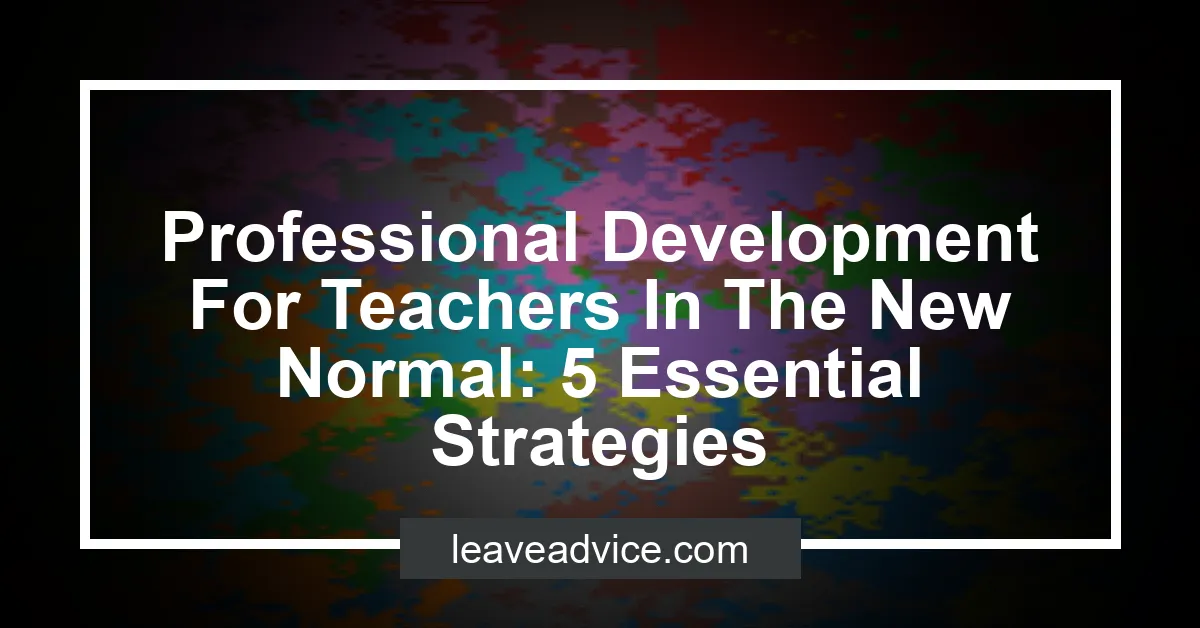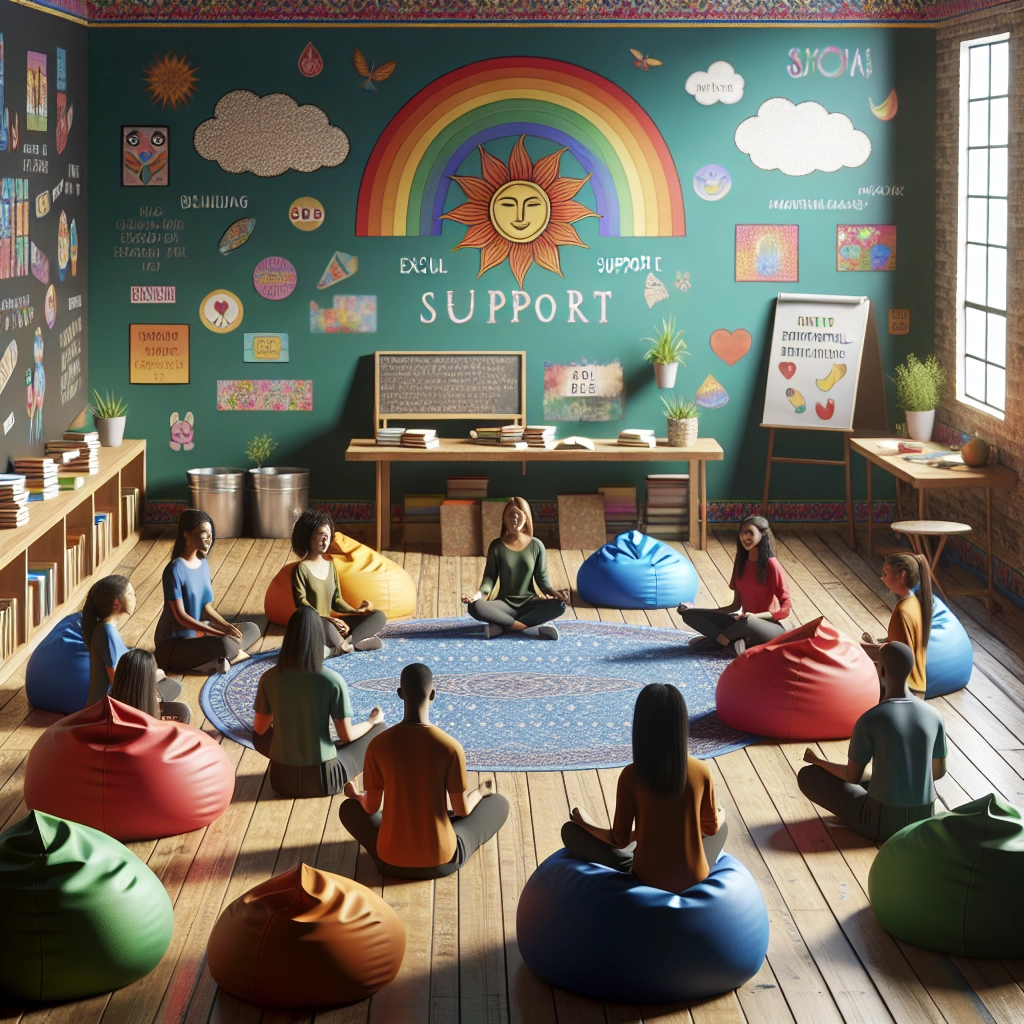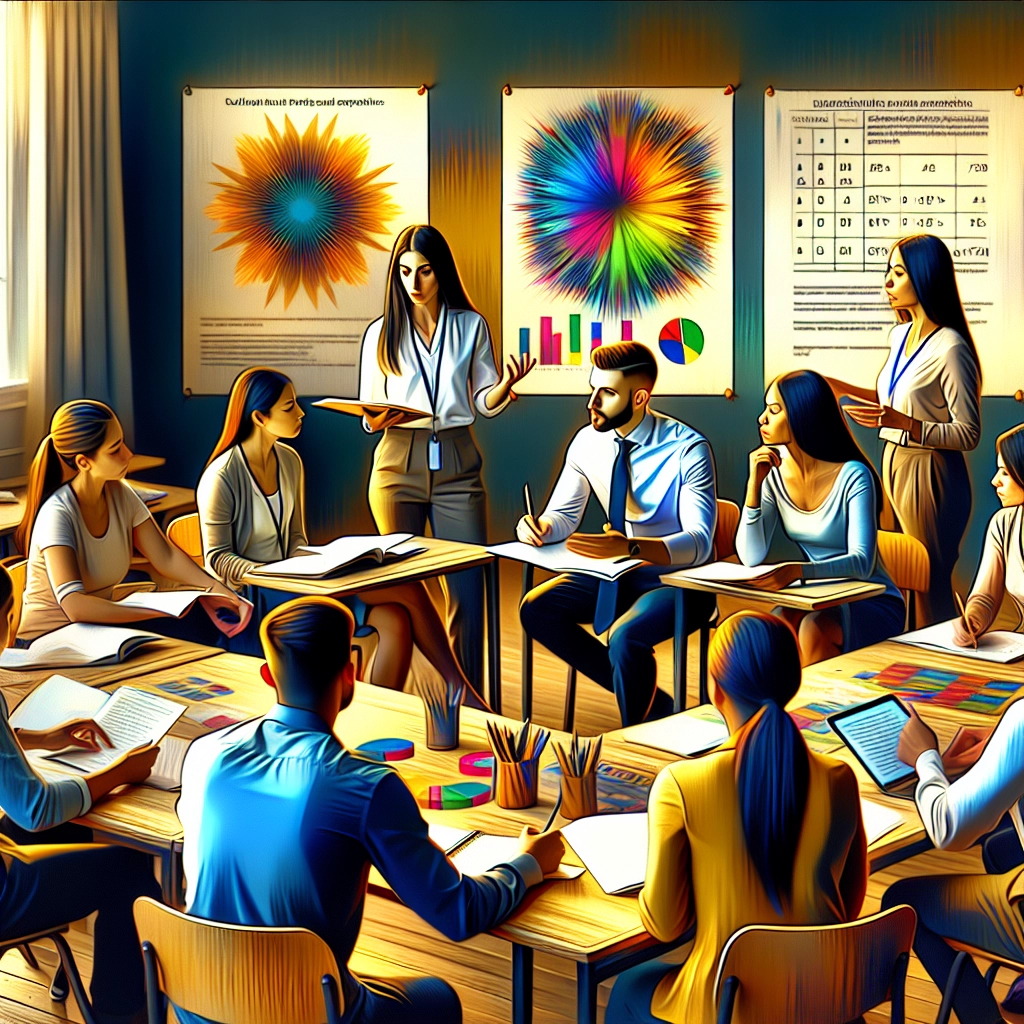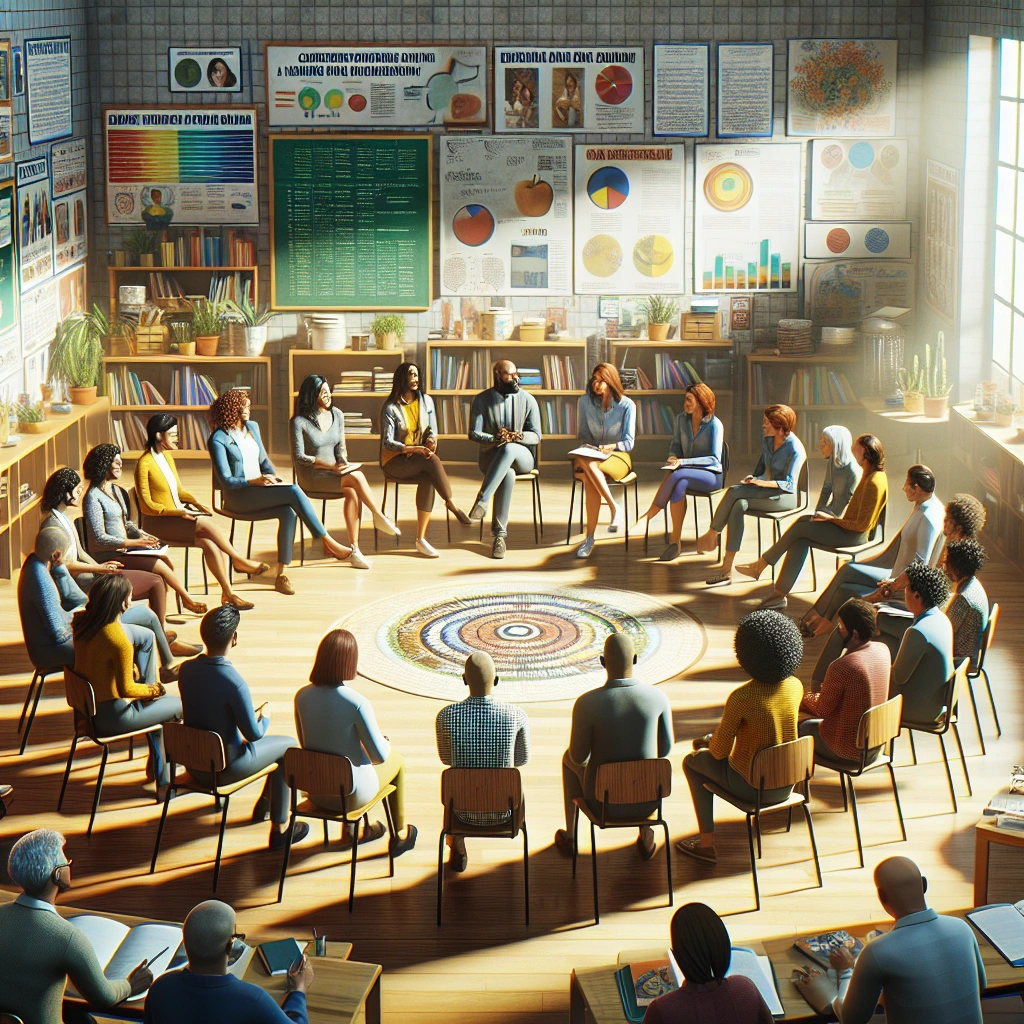Professional Development For Teachers In The New Normal: 5 Essential Strategies
In the new normal, teachers are facing a critical need for professional development to address the challenges brought on by the post-pandemic world. This includes addressing learning loss due to school closures and disrupted learning, as well as the emotional and mental health needs of students.
Professional development for teachers in the new normal should prioritize instructional practices over content knowledge, and focus on concrete materials for practice. It should also provide support for adapting to new technologies and delivering remote education.
With the changing role of teachers and technologies in the new normal, professional development should also focus on enhancing government-teacher support and adapting coaching programs to be delivered remotely. Technology has enabled new ways of learning, communicating, and working collaboratively, and professional development should incorporate these changes.
Check out this Youtube video: “Professional development for teachers in the new normal” for valuable insights and strategies to navigate the changing educational landscape in the midst of the pandemic.
Adapting to the New Normal
In these unprecedented times, it’s imperative for teachers to adapt their teaching practices to the new normal. The importance of this adaptation cannot be overstated, as it directly impacts the quality of education students receive in today’s rapidly changing world.
Importance of adapting teaching practices to the new normal
The new normal requires teachers to be open to new modes of instruction and learning, fostering flexibility and resilience. Embracing this shift ensures that educators can effectively engage and empower students, equipping them with the necessary skills to thrive in an evolving educational landscape.
Strategies for embracing technology in the classroom
To enhance professional development and stay ahead in the new normal, teachers can leverage technology by preparing learning materials beforehand, utilizing curated videos, developing short instructional modules, and continually monitoring student outputs. Additionally, embracing collaborative tools like Slack or Remind can foster effective communication and teamwork skills among students.
| Innovative Teaching Strategies | |
|---|---|
| 1. | Prepare learning materials beforehand |
| 2. | Utilize curated videos |
| 3. | Develop short instructional modules |
| 4. | Monitor student outputs and progress |
Online Teaching Strategies
Effective methods for engaging students in virtual learning
To effectively engage students in virtual learning, educators can utilize gamification, collaborative learning, personalized learning, and the flipped classroom approach. Gamification introduces game elements to enhance engagement, while collaborative learning fosters teamwork and interaction.
Personalized learning tailors the educational experience to each student, catering to their individual needs. Additionally, implementing the flipped classroom model enables students to learn at their own pace, ensuring greater engagement and comprehension.
Utilizing online resources for professional development
When it comes to professional development for teachers in the new normal, utilizing online resources is crucial. Ed2Go offers comprehensive professional development options, covering instructional design, classroom technology integration, and a diverse online course catalog.
KQED Education and ASCD provide free standards-aligned resources and opportunities for teachers to enhance their teaching skills through online courses, workshops, and conferences. Furthermore, utilizing student and teacher performance data for informed decision-making and gathering feedback through online assessments facilitates effective use of digital education resources.
Flexibility and Resilience
Developing flexibility and resilience in the face of uncertainty
In times of uncertainty, developing flexibility and resilience is crucial for professional development. Teachers can enhance their adaptability by embracing changes in the education system, exploring new teaching methods, and being open to innovative technologies.
Additionally, fostering resilience involves maintaining a positive mindset and finding constructive ways to navigate challenges, such as seeking support from colleagues and continuously learning and growing in their roles.
Coping strategies for managing stress and workload
Teachers can employ various coping strategies to manage stress and workload effectively. This may include practicing mindfulness techniques such as meditation and deep breathing exercises to alleviate stress and promote mental well-being.
Moreover, time management skills, prioritizing tasks, and setting boundaries can aid in maintaining a sustainable workload. Engaging in regular physical activity and finding outlets for creativity can also contribute to reducing stress levels and achieving a healthy work-life balance.
| Coping Strategy | Description |
|---|---|
| Mindfulness Techniques | Practices like meditation and deep breathing exercises |
| Time Management | Prioritizing tasks and setting boundaries |
| Physical Activity | Engaging in regular exercise for stress reduction |
| Creative Outlets | Finding creative activities as a stress reliever |
Supporting Student Well-being
Integrating mental health support into the curriculum
In today’s ever-changing educational landscape, it’s crucial to integrate mental health support into the curriculum to ensure students’ overall well-being. Educators should focus on incorporating psychoeducation, psychological services, open communication, mental health awareness, and safe environments.
By embracing these strategies, teachers can create an environment that nurtures positive mental health and provides the necessary support for students’ emotional and psychological needs.
Creating a supportive and inclusive classroom environment
To foster a supportive and inclusive classroom environment, teachers can initiate personalized interactions by greeting students individually, taking an interest in their activities, and reinforcing established rules and routines. Additionally, employing inclusive teaching strategies and providing guidance on the impacts of social media and privacy concerns can foster an inclusive and safe community for all students.
These approaches help create an environment that values, supports, and empowers all students, contributing to their overall well-being and success.
Collaboration and Networking
The value of collaboration among educators in the new normal
In the new normal, collaboration among educators is not just valuable; it’s an absolute necessity. Teachers are leveraging collaborative networks to learn about new digital tools, integrate innovative teaching activities, and share the responsibility for creating online or take-home resources.
The exchange of best practices has become crucial for adapting to the evolving educational landscape.
Building professional networks for sharing best practices
Building professional networks is an essential element in ensuring the successful sharing of best practices. Educators are tapping into operational, personal, and strategic networking to enhance their teaching and learning processes.
By actively engaging in professional learning communities and expanding their circles, teachers gain valuable insights, allowing them to improve their teaching methodologies and brainstorm innovative ideas.
Cultivating Cultural Competence
In the new normal, understanding and addressing diversity in the classroom is essential for creating an inclusive and supportive environment for both students and teachers. Embracing diversity involves recognizing and respecting the unique backgrounds, experiences, and perspectives of individuals, fostering an environment where all voices are valued and heard.
When it comes to promoting inclusivity and cultural competence, teachers can employ strategies such as providing students with a sense of belonging, creating a psychologically safe and welcoming environment, and promoting active listening. Additionally, expressing interest in students’ ethnic backgrounds, facilitating open discussions about diversity, and using inclusive language in all forms can significantly contribute to fostering cultural awareness and inclusivity in the classroom.
Through these strategies, teachers can facilitate a more inclusive and culturally competent learning environment that celebrates diversity and empowers all students to thrive in the new normal.
Personal Growth and Self-care
Prioritizing self-care and wellness for teachers
Taking care of oneself is critical, especially in the fast-paced and demanding environment of teaching. Prioritizing self-care involves setting boundaries, acknowledging moments of joy, and reflecting on feelings and needs.
Additionally, implementing self-care activities in the classroom can help teachers maintain a balance between professional and personal life.
Opportunities for personal and professional growth in the new normal
The new normal presents a range of opportunities for teachers to enhance their personal and professional growth. Embracing technological advancements, engaging in continuous learning through workshops and webinars, and adapting to new teaching methodologies are crucial for thriving in the evolving educational landscape.
Moreover, prioritizing mental well-being and valuing individual growth contribute significantly to achieving professional excellence.
Technology Integration in Lesson Planning
Incorporating technology into lesson planning and delivery is essential in the modern educational landscape. Utilizing digital tools like visual aids, videos, interactive whiteboards, and online resources can greatly enhance the learning experience for students.
By incorporating technology into lesson planning, educators can make lessons more interactive and engaging, ultimately leading to better retention and understanding of the material.
Enhancing teaching effectiveness through digital tools is a game-changer for educators. Platforms like Google Classroom, Edmodo, and Kahoot provide innovative ways to engage students and streamline classroom activities.
Digital tools also allow for personalized learning experiences tailored to individual student needs, ultimately fostering a more inclusive and dynamic learning environment.
The integration of technology in education has revolutionized traditional teaching methods, offering a wealth of opportunities for educators to create stimulating and enriching lesson plans. Digital tools not only facilitate better lesson organization but also provide a platform for innovative and interactive learning experiences, ensuring that the educational landscape continues to evolve with the changing times.
| Technology | Benefits |
|---|---|
| Visual Aids | Enhances understanding |
| Videos | Engages students |
| Interactive Whiteboards | Facilitates interactive learning |
| Online Resources | Personalized learning opportunities |
By embracing technology in lesson planning, educators can effectively cater to the diverse needs of students and foster a more engaging and impactful learning environment.
Remember, the key to successful integration of technology lies in leveraging these digital tools to create dynamic, interactive, and personalized learning experiences that cater to the unique needs of today’s students.
Student Engagement in Hybrid Learning
Strategies for keeping students engaged in hybrid learning environments
When it comes to keeping students engaged in hybrid learning environments, it’s essential to incorporate a variety of interactive learning tools. Utilizing virtual simulations, interactive quizzes, and collaborative online activities can help maintain student interest and participation.
Balancing in-person and remote teaching strategies
Balancing in-person and remote teaching strategies requires a delicate blend of synchronous and asynchronous approaches. Leveraging live video sessions for in-person and remote learners, coupled with recorded lectures and interactive online assignments, can ensure that both groups receive a high-quality learning experience.
Data-Driven Instructional Practices
Data-driven instructional practices play a crucial role in shaping the new normal for professional development for teachers. By utilizing data to inform instructional decisions, educators can adapt their teaching strategies to meet the evolving needs of students in the current educational landscape.
This approach enables educators to analyze various forms of data, including quantitative and qualitative, to gain deeper insights into student progress and comprehension.
When implementing evidence-based teaching practices, the focus is on enhancing student success through proven instructional methods. By leveraging evidence-based strategies, teachers can actively engage students in the learning process, leading to higher retention rates and improved academic achievements.
Understanding effective evidence-based practices is essential in closing achievement gaps and fostering a supportive learning environment.
The integration of data-driven instructional practices benefits both educators and students, contributing to a more adaptive and effective approach to professional development for teachers in the new normal.
Ongoing Professional Learning
Continuous professional development is crucial for educators to stay updated with the latest teaching practices and methodologies, enhancing their skills, motivation, and commitment to teaching.
The importance of continuous professional development for educators
Continuous professional development for educators is essential as it enhances their teaching abilities, positively impacting student achievement. Research shows that professional development can improve student achievement by as much as 21 percentile points, highlighting its significant impact on educational outcomes.
Accessing resources and opportunities for ongoing learning and growth
Educators can access valuable professional development resources from reputable platforms such as KQED, Edutopia, TeachThought, BookWidgets blog, and Shake Up Learning. These resources offer diverse opportunities for ongoing learning and growth, empowering teachers to continuously enhance their knowledge and teaching practices.
Supporting Special Education in the New Normal
Adapting teaching practices to support students with special needs
Special education professionals in the new normal must adapt their teaching practices to accommodate the unique needs of students with disabilities. This includes leveraging technology to provide personalized learning experiences and incorporating innovative teaching methods to promote engagement and comprehension.
Ensuring inclusivity and accessibility in the new normal classroom
In the new normal classroom, ensuring inclusivity and accessibility is paramount. Teachers need to create a supportive environment that caters to the diverse learning needs of all students.
This involves implementing universal design principles to make educational materials and activities accessible to everyone, fostering a sense of belonging and active participation.
Managing Work-Life Balance
Balancing work and personal life is essential, now more than ever in the new normal. With the increasing demands of the teaching profession, it’s crucial to find effective ways to manage this equilibrium.
Proper time management, setting boundaries, and prioritizing self-care are fundamentals that can significantly impact a teacher’s well-being. By implementing these strategies, teachers can achieve a healthier work-life balance, ultimately enhancing their overall quality of life.
Addressing Learning Gaps
Identifying and addressing learning gaps in the new normal
In the new normal, identifying and addressing learning gaps is crucial to ensure that students are receiving the support they need to excel. This can involve assessments to identify specific areas where students are struggling, enabling teachers to tailor their instruction to meet those needs effectively.
It also includes implementing personalized learning plans to address individual learning gaps, ensuring that no student is left behind in this ever-evolving educational landscape.
Intervention strategies for supporting students’ academic needs
For supporting students’ academic needs, intervention strategies play a vital role in addressing learning gaps. This may involve providing additional one-on-one tutoring, personalized learning resources, and utilizing technology to enhance the learning experience.
By implementing targeted intervention strategies, educators can effectively address the academic needs of their students, leading to improved learning outcomes and overall academic success.
Intervention Strategies
Description
Personalized Learning Plans
Customized plans to address individual learning gaps.
One-on-One Tutoring
Providing personalized support to students.
Utilizing Technology
Integrating digital tools to enhance the learning experience.
By identifying and addressing learning gaps, as well as implementing effective intervention strategies, educators can ensure that students receive the support they need to succeed in the new normal of education.
Fostering a Positive School Culture
Creating a positive and supportive school culture in the new normal
In the new normal, creating a positive and supportive school culture is crucial for the well-being of both students and educators. Implementing regular check-ins and mental health support sessions can help foster a positive atmosphere, ensuring that everyone feels valued and supported.
Strategies for promoting collaboration and teamwork among educators
To foster collaboration and teamwork among educators, implementing regular collaborative planning sessions and professional development workshops can be beneficial. Providing opportunities for educators to share best practices and discuss challenges they face in the new normal can lead to a more cohesive and supportive teaching environment.
Recommended Amazon Products for Professional Development for Teachers in the New Normal
Here’s a curated list of products that can help educators thrive in the new normal. These recommendations are based on the need for technology integration, effective online teaching strategies, and maintaining work-life balance amidst changing classroom dynamics.
The Logitech C920x HD Pro Webcam is highly recommended for teachers navigating online teaching. With full HD 1080p video at 30 frames per second, it delivers clear, professional-quality video for virtual lessons.
The built-in dual stereo mics ensure clear audio, enhancing the virtual teaching experience.
| Pros | Cons |
|---|---|
| High-definition video quality | Relatively high price point |
| Dual stereo mics for clear audio | Requires a USB 3.0 port for optimal performance |
The Kindle Paperwhite is a valuable tool for accessing digital resources for professional development. Teachers can easily carry a library of educational materials, research articles, and e-books in a portable and convenient device.
The adjustable built-in light allows for comfortable reading, even in bright sunlight or dimly lit classrooms.
| Pros | Cons |
|---|---|
| High-resolution display for enhanced reading | Not color display for multimedia content |
| Long battery life for extended use | Limited to Amazon’s proprietary format for e-books |
The Anker Wireless Vertical Ergonomic Mouse is designed to provide comfort during long periods of computer use, making it ideal for educators adapting to increased screen time. Its ergonomic design reduces wrist strain and carpal tunnel discomfort, promoting better productivity while ensuring teacher well-being.
| Pros | Cons |
|---|---|
| Ergonomic design for improved comfort | Takes time to adapt to vertical mouse orientation |
| Wireless connectivity for convenience | Battery life could be longer |
Bose Noise Cancelling Headphones 700 offer a blend of top-notch noise cancellation, crystal-clear audio quality, and comfort. With the rise of hybrid learning environments, teachers can create a focused and immersive workspace for delivering online lessons or participating in virtual professional development sessions.
| Pros | Cons |
|---|---|
| Superior noise cancellation for improved concentration | Relatively higher price point |
| Comfortable for extended wear | Limited color options |
The HP Color LaserJet Pro M283fdw offers versatility with its printing, scanning, copying, and faxing capabilities. This all-in-one printer is ideal for educators needing to create physical resources and materials for their classes while maintaining a professional and polished appearance.
| Pros | Cons |
|---|---|
| Fast printing and scanning capabilities | Relatively larger footprint |
| Wireless connectivity for seamless integration | Higher initial cost compared to inkjet printers |
Top Recommended Product for Professional Development for Teachers in the New Normal
If you’re looking for the best solution for professional development in the new normal, we highly recommend the Logitech C920x HD Pro Webcam. With its high-definition video quality and clear audio, it enhances the virtual teaching experience, ensuring effective communication with students and colleagues.
Ready to improve your professional development in the new normal? Check out the today for the best results!
Conclusion
Professional development for teachers in the new normal is essential for equipping educators with the necessary skills and knowledge to effectively navigate the challenges of online and hybrid learning. Through targeted workshops and training sessions, teachers can enhance their technological proficiency and gain innovative teaching strategies to engage students in virtual classrooms.
This professional development also plays a crucial role in promoting continuous improvement and adaptation to the ever-evolving educational landscape.
Moreover, professional development for teachers in the new normal fosters a supportive and collaborative learning environment where educators can share best practices and learn from one another. This collective approach encourages the exploration of new instructional methods and the implementation of diverse learning resources to meet the needs of students in the digital age.
Additionally, ongoing professional development empowers teachers to stay motivated, resilient, and confident in their ability to deliver high-quality education, regardless of the mode of instruction.
Furthermore, professional development for teachers in the new normal contributes to the overall improvement of student outcomes by ensuring that educators are well-prepared to deliver effective instruction and support student success. By continuously updating their skills and knowledge, teachers can adapt to the changing demands of education, promote student engagement, and create meaningful learning experiences that lead to positive academic results.
Investing in professional development for teachers is a crucial aspect of building a strong and sustainable educational system in the new normal.




